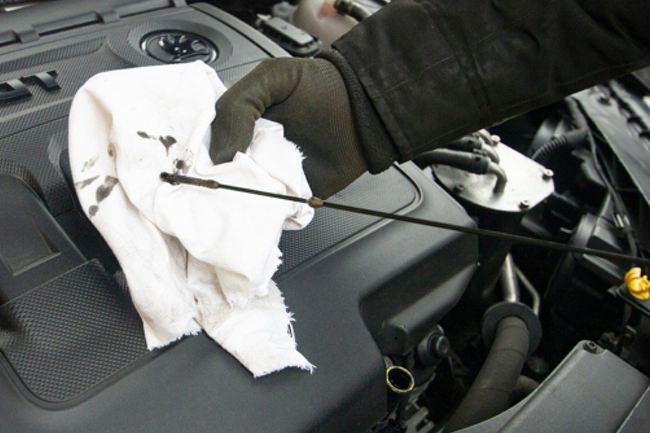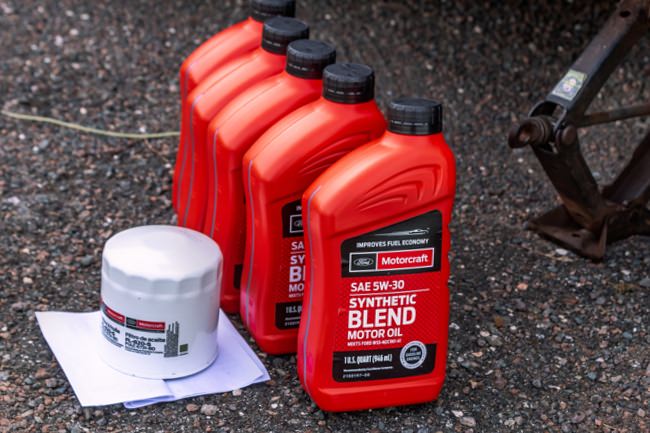Everything That’s Involved In An Oil Change
 Neglecting your oil changes can lead to engine damage or even engine failure, so all drivers should understand the basics of an oil change.
Neglecting your oil changes can lead to engine damage or even engine failure, so all drivers should understand the basics of an oil change.
An oil change is one of the most frequent and important services for any vehicle. The following are the most frequently asked questions about oil changes:
How Can I Tell if I Need an Oil Change?
The most obvious sign is the oil change warning light activating on your car’s dashboard. You can also check the oil level by removing the dipstick from the oil reservoir under the hood, wiping the oil off, reinserting it into the tube, and removing it once again.
This will show you whether or not the oil level is getting too low. It’s also time for an oil change if the oil looks grainy, gritty, or too thick.
How Long Does an Oil Change Take?
If you take your car to the shop for an oil change, it will probably take between 15 and 45 minutes. If you change it yourself, it may take longer until you get familiar with the steps in the process.
Once you’re experienced with oil changes, though, you can save time by changing your car’s oil on your own.
How Much Does an Oil Change Cost?
The cost of an oil change varies depending on your location, your car, and the type of oil your vehicle needs. According to Kelley Blue Book, an oil change using conventional oil typically costs $35 to $75. Using synthetic oil, it can cost between $65 and $125, but it lasts longer and is better for your engine.
How Often Should You Change Your Oil?
You can consult the suggested maintenance schedule for the make and model of your car to find out how often the manufacturer recommends an oil change. The frequency depends on the type of car you drive and the type of oil you use.
Most manufacturers suggest getting an oil change at the very least once every six months, but if you drive a lot, you may need to have it changed more frequently.
How Do I Change My Oil Myself?
 Changing your oil yourself can be convenient and cost-effective once you get some practice.
Changing your oil yourself can be convenient and cost-effective once you get some practice.
- First, you’ll have to jack up your car so that you have space to work underneath it.
- Then, place a large bucket underneath the drain plug.
- Then you will unscrew the plug with a wrench to release the old oil. It will take a few minutes for the oil to fully drain out.
- Next, use an oil filter wrench to remove the oil filter. Some more oil may drain out of the top while you loosen it, so you should wait until this oil flows out before you fully unscrew the filter and remove the O-ring.
- Now, you can insert the new oil filter and screw the drain plug back in.
- Lastly, lower your car back to the ground and open the hood.
- Then you can remove the oil cap and use a funnel to fill the engine with new oil.
At this point, you can start your vehicle and let it idle for a few minutes while you check for leaks.
How Many Kilometres Can I Go Between Oil Changes?
If you drive an older car, you may need to get an oil change ever 3,000 kms or 5,000 kms. The general recommendation for newer cars is around every 5,000 kms or 8,000 kms.
Vehicles that use full synthetic oil may be able to go 8,000 kms or 12,000 kms between changes.
Can You Drive With the Oil-change Light On? How Far?
The oil change light indicates that you need an oil change soon, but it doesn’t mean it’s an immediate emergency. You should however, get an oil change within two weeks or 250 kms of driving if you see this light.
If the low oil pressure light comes on, you should turn the car off right away because continuing to drive may lead to serious engine damage and you do not want that to happen.
Does Changing Your Oil Yourself Void Your Car’s Warranty?
Changing your own oil or getting an oil change at an independent garage should not void your warranty. However, car warranties include a number of specific requirements, and dealerships may look for excuses not to honour your warranty.
Be sure to keep all your receipts from oil changes or other services, and if you change your own oil, use the products recommended by the manufacturer and keep the receipts for the products you bought too.
How Should I Dispose of the Oil When I’m Done?
Collecting and safely disposing of the oil is important and helps protect the environment. A large bucket and a tarp will help you contain all the oil during the change and you can then bring the oil to a hazardous waste collection site in your area, to an auto mechanic shop, or to an auto parts store that accepts used oil like Canadian Tires usually does.
Leave a Reply